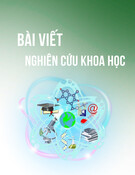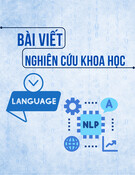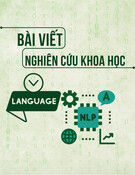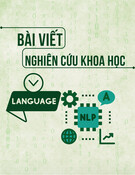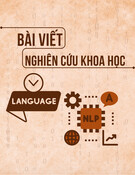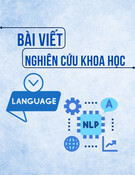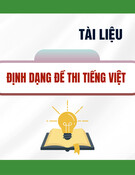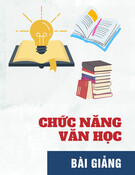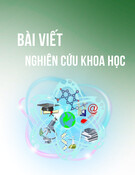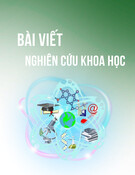
42
ENGLISH-MAJOR STUDENTS’ USE OF DIGITAL RESOURCES
FOR INFORMAL LANGUAGE LEARNING AT UNIVERSITY
OF FOREIGN LANGUAGES AND INTERNATIONAL STUDIES,
HUE UNIVERSITY
Hoang Thi Hanh Nguyen; Truong Bach Le
University of Foreign Languages and International Studies, Hue University
tbachle@hueuni.edu.vn
(Received: 09/11/2023; Revised: 29/12/2023; Accepted: 23/02/2024)
Abstract: This study aimed at investigating English-major students’ experiences with the
use of digital resources for their informal language learning (ILL) at a university in Vietnam.
The data collection instruments included questionnaires, which were delivered online to 91
participants, and semi-structured interviews carried out with 12 of these participants. The
results show that the students reported to frequently utilize a variety of digital resources for
ILL, with online/offline dictionaries and translators, TV programs, YouTube videos, social
networking, and language learning sites being the most commonly used. While the findings
indicate that AI platforms were not widely used by English-major students due to their recent
introduction, most interviewees expressed interest in these new platforms. In addition, the
results reveal that students engaged in ILL within both extracurricular and extramural
contexts, indicating flexibility in their usage of digital resources. Finally, some implications
for EFL teachers and students were provided for optimal use of ILL digital resources.
Keyword: Informal language learning, digital resources, English-major students
1. Introduction
Since there has been a shift from teacher-centered to learner-centered approach,
associated with the advancement in technology-based approach in recent years, learners’ ability
to take charge of and self-regulate their own learning outside the contexts of classroom is
increasingly becoming crucial for them to adapt to the changes. In reality, many studies have
shown that digital tools such as gaming, mobile devices, social media, video streaming, and online
communities had a considerable impact on informal L2 learning with great interest and
engagement of learners (Alm, 2015, Chen, 2013; Richards, 2015; Sundqvist, 2019; Wang &
Chen, 2019). Furthermore, using digital resources for informal language learning helps learners
improve different skills in their English competence with authentic communication opportunities
available (Aryati, Widiati, & Riyanto, 2019). Considering the contexts of Vietnamese tertiary
education, English-major students are required to attain high levels of proficiency and mastery in
English to fulfill the demands of jobs that necessitate in-depth and precise language skills.
Consequently, autonomous learning or informal language learning becomes an almost obligatory
pursuit for these students if they desire to acquire necessary expertise, and accordingly, digital
resources emerge as indispensable tools for their English learning outside instructional contexts,
without or with little guidance from their teachers.
In the light of the situations above, the researcher decided to conduct a study to investigate
the use of digital resources for informal English learning in Vietnamese educational context where
a great number of studies still focus on formal or institutional settings and how teachers apply







